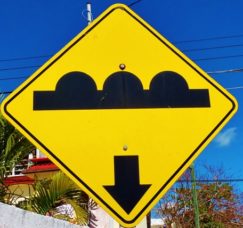
Driving in Mexico and Playa Del Carmen
Driving in a foreign country might be something you cannot imagine yourself doing or you might have some anxiety over doing it. We want to tell you some basic road rules for driving in Mexico that will help ease your fears and give you more confidence to go out on your own to explore.
Renting a car to drive in Mexico
Renting a car and driving gives you freedom to go to places without relying on a tour bus and their schedules. It also can be cost effective if there are several people. There are many rental agencies to choose from both at the airport and in Playa Del Carmen. Even if you get to Tulum and you decide to rent a car, you will find places to rent from. Smaller towns have limited or no rentals available. See our article about renting cars and the tips for renting in Mexico.
Once you have your car you are off for adventure. There are actually very few roads in the Yucatan Peninsula, so it is hard to get lost. Roads are well marked and in decent condition. Roads here take far less abuse than other places. We do not have severe winters that damage the pavement, many people use mopeds and motorcycles, people use busses instead of cars to get around, and people even bike. So, in addition to roads in decent shape there is not a lot of traffic on the roads.
Car Insurance in Mexico
If you are driving into Mexico with your own car, motorcycle or even moving truck you will want to have insurance that covers you in Mexico. It is required by law and having a policy that knows the regulations of Mexico is good so in case you do need it; it is not a major hassle.
Car Insurance for Renting in Mexico
If you are renting be sure to have printed out your insurance coverage and having liability is very important to have by law in Mexico! The reason for this is if you have a serious accident and other people get hurt or killed, you will be held by the police until you can prove you have liability insurance. This may sound severe, but this is a good thing that the police make sure people pay for injuries.
Toll Roads in Mexico
There are two toll roads between Yucatan State and Quintana Roo State. These are the 180 “Cuota” (not to be confused with the 180 libre) and the 305 Highway between Playa Del Carmen and Nuevo Xcan. Tolls are to be paid in pesos only, they do have a credit card machine, but it is often not online, so be prepared with cash in pesos.
What to do when your car breaks down while driving in Mexico
If you are on a main road and you have car problems, you can call 911 for the emergency services. However, there is a group of people called the Green Angels that drive the road and provides free services to stranded motorist. If you are stuck on a main road, put your hood up as a sign of trouble. If you want to call them directly their number is 01-55-5250-8221. English is most likely spoken as well as Spanish.
Dealing with the Police in Mexico
The number one thing people usually worry about is the police. Will I get stopped for something? Will I be asked for a bribe? What if I do not speak Spanish? For the most part the police are very helpful and are there to keep the roads safe.
The good news is that everyone knows that tourist bring in a lot of income for the country, the bad news is that police know tourist may not know the laws and are easy to ask for money. The other good news is that you will have far better chance of having an issue getting gas then with the police. (Make sure you read out article on avoiding scams at the gas station before going out for a drive!)
There are police checkpoints through the Yucatan Peninsula including the state of Quintana Roo where Cancun and Playa Del Carmen are. Sometimes there is a checkpoint near the Cancun Airport, there is a checkpoint entering and leaving Playa Del Carmen, there is a checkpoint entering Tulum, a check point at the state boarders as well as other places but these are the most often crossed by tourist. (Big tip: there are cameras run by solar power high up on poles before you get to some checkpoints, so if you are speeding don’t think you are going to be ok if you slow down for the checkpoint.)
Speeding tickets and getting stopped by the police
The good news is that police rarely pull you over on the highway. Traffic usually moves along at its own pace and colectivos speed down the highway at a rate higher than the posted limit. This however does not mean you should feel free to do so.
If you are stopped at a checkpoint, make sure to have all your papers ready, this includes your valid driver’s license and rental contract for your car. You should check the paperwork before you leave the agency because the police can ask you a question if it is not in order (i.e. not having the matching license plate on the paperwork that your car has.) You should ask for a phone number of the agency you rented from which can come in handy of you need to call them or if you are having trouble understanding Spanish. This means having a cell phone and enough credit to call long distance.
What to do if asked for money?
What if there appears to be a problem and it seems as if the police are asking for a bribe? First thing is trying to understand the problem. Sometimes they are merely pointing something out or striking up a conversation on where you are going, and they offer helpful directions. If they say that something is wrong, and your Spanish is good, try to see if this is indeed the issue or they are just saying something is wrong.
If you have been speeding or drove down a one-way street the wrong way, then it is up to the police what to do. It is best to wait for them to give you a ticket. Most of the time if it is not a major infraction or perhaps you are not sure it is even something real, they will just make you sit there a little while they “check something” in their car and then wave you on.
If they write a ticket it goes on record what they are alleging and often this only gets officers in trouble if it is fraud. It may seem easy to hand over a 200 or 500 peso note to avoid the hassle of figuring out a ticket but like we said, most of the time you will not actually get a ticket and you will only feed the problem of corrupt police asking for money. An educated driver is the best defense against corruption.
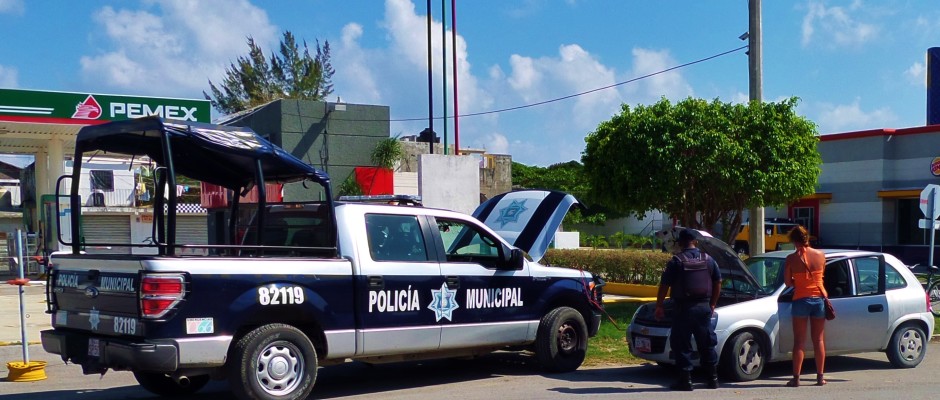
Local Road Rules for Driving in Mexico
There are some things you will have to get used to when driving in Mexico. On rural roads like the one from Tulum to Coba, in order to pass a car, make sure you are in the section that allows it, then speed up, the car in front of you will drive on the right side of the road a little to make it easier for you to pass. You should do the same if someone is trying to pass you, pull slightly toward the right to allow more room to pass. This is very helpful on two lane roads.
Traffic circles (or “glorieta” in Spanish) can be found in some parts of the Yucatan. Sometimes you are supposed to stop before entering the circle and other times you enter without stopping but yield to your left for oncoming traffic. If you find yourself behind a construction truck, give them room because a lot of trucks have gravel that bounces off onto the road and can crack your windshield. (Something that is often not covered by basic insurance.)
Gas. Make sure you fill up before you go on long trips because if your tank is low, you may not find a gas station before you need it. Gas stations in some parts of the Peninsula are only in towns and there can be 100 KM stretches of road between fill ups. See our guide on how to avoid scams at the pump.
Caution: Speed bumps (everywhere!)
The most important sign to look out for while driving in Mexico is the “Topes” sign. This is a bit humorous because anyone that has ever driven in and around Playa Del Carmen will tell you that at one time or another they had been driving along and missed seeing the speed bumps and bottomed out their car or braked hard to avoid hitting them.
Topes are speed bumps that are places in cities to slow traffic or even on highways to alert drivers they are entering a town or police checkpoint. Topes vary from plastic half circle bumps to a mountain of concrete in the road. Usually there is a sign alerting you that there are topes several hundred meters ahead and then a sign with a down arrow indicating where it is exactly in the road. It seems no matter how vigilant you are, they sneak up on you. This is where your copilot can help you and spot these hazards before you speed into them.
Caution when it rains when driving in Mexico!
If you are driving on the 307 highway that runs from Cancun down to Chetumal, be careful when it rains. This applies especially for the section from Cancun to Tulum. The road can be slick with fresh rain hits it. Roads are not designed the best for run off and sometimes the deluge that happens here in the topics creates pools of water. All of this in conjunction with not the best skilled drivers and unfamiliar tourist drivers creates a spike in fender benders. Keep alert and slow down when it rains.
Driving in Playa Del Carmen
If you are going to be driving around Playa Del Carmen, here are some tips for driving within the city.
- Most streets are one way.
- It can be hard to decipher at each intersection if you have to stop or the other street has the stop sign. Many times, you hear a screech, and it is because one driver ran through an intersection without stopping, so even if you have no stop sign look out for other drivers.
- Watch out for bikes, trikes, and mopeds that make their own lanes. Sometimes the streets can be a little less then organized and have their own flow.
- If you drive on 30th Avenue you will be driving with the busses since most use this Avenue for their routes. Frequent stops and maneuvering around other busses should be expected and since they are bigger than you, they just might feel they can pull in front of you even if there is not space.
- Taxi drivers are not known for driving the best in Playa Del Carmen and often accidents with them result in “your fault”. Take lots of photos if you have a run in with one especially if it was not your fault.
- Watch out for topes (speed bumps)
- For the love of God do not drive on 5th Avenue. It is a pedestrian street. Every once in a while, a lost tourist thinks they can drive down 5th Avenue with hundreds of tourists walking around.
- Don’t expect to drive to your hotel below 10th Avenue. Most of the streets are blocked off and they only allow taxis or delivery trucks.
- If you take the highway through Playa Del Carmen, make sure you know where to get off, you can pass your street and have a time trying to figure out how to get back.
- Avoid Juarez Avenue because it is so busy with activity and busses.
- Watch for pedestrians. At raised sections of the street you have to yield to people crossing. At other places tourist sometimes think they have right-of-way but are really just crossing in the middle of traffic.
- Do not park at yellow lines or near intersections. If you park illegally the police will unscrew one of your license plates and hold it until you come and pay. This is not a fun process, so make sure when you park you are legal.
- If you rent or drive a scooter/ moped around, be careful of smooth concrete streets like Constituyentes Avenue and 30th Avenue. If there is a little water the road becomes very slick. Read our article on scooters in Playa Del Carmen.
We hope this article helps you prepare for driving in Mexico. It is not as hard as it seems but being prepared and educated makes it much easier.
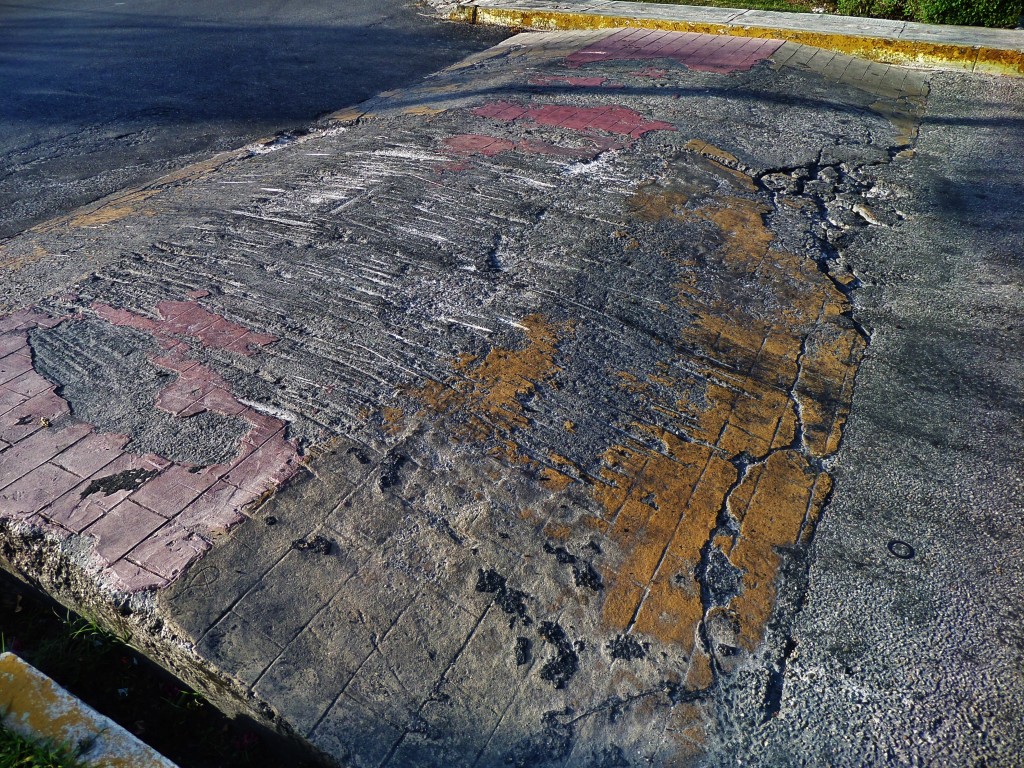


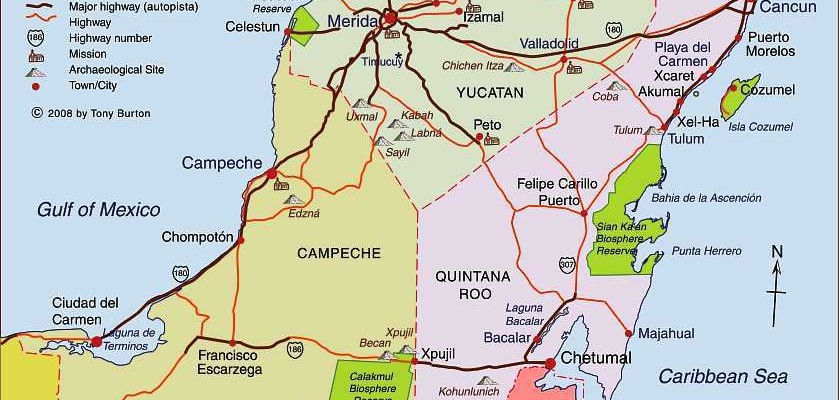
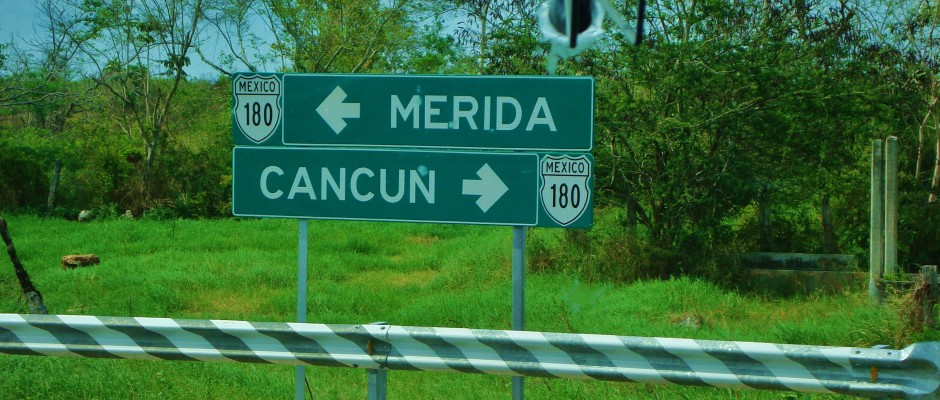
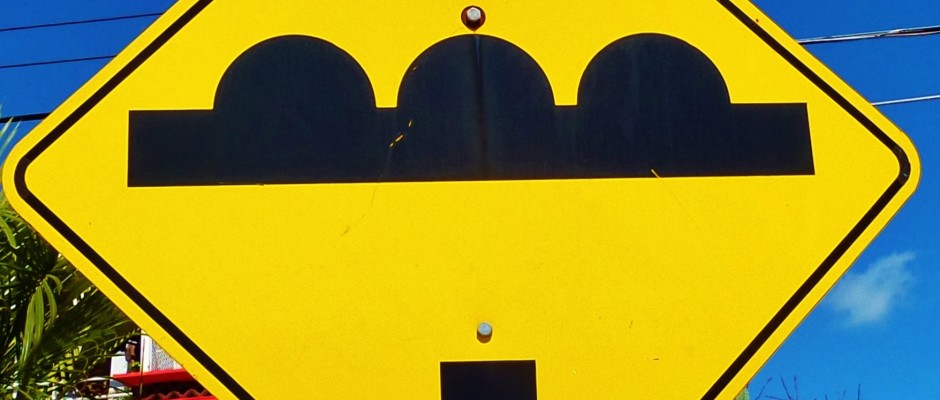
Great article! I will pass this onto my son who is debating weather or not to rent a car or take taxis. I told him to just pay 200 pesos if he’s stopped for an infraction. I see now this is not a good idea…